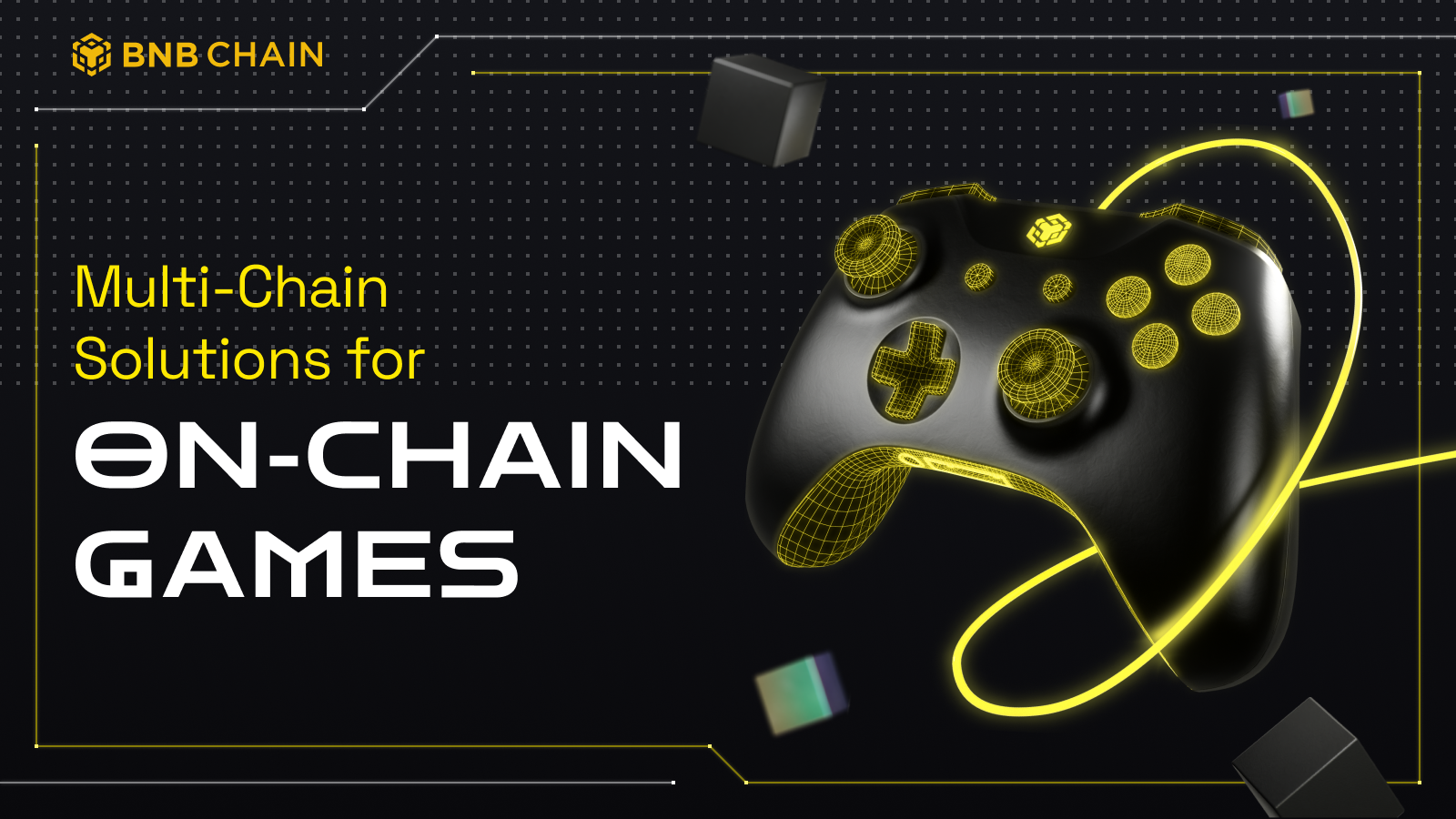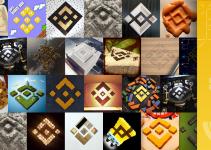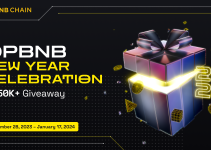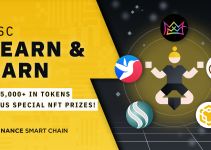Table of Contents

TL;DR
As 2023 comes to an end, the global active gamer count is projected to surpass 3.3 billion. In contrast, Web3 games only attract about 1 million daily active players, a number significantly lower than that of Web2 games.
At the same time, the Web3 gaming industry is undergoing a significant transformation with the emergence of Fully On-Chain (FoC) games. This article explores the core aspects of FoC games, which include:
- The numerous benefits of on-chain games reveal their unique open economic model, abundant user-generated content (UGC), and resistance to censorship.
- Addressing issues such as network latency, transparency limitations, poor UI/UX, and high gas costs, among others, are explained.
- Finally, we aim to outline an innovative blueprint based on a multi-chain solution for FoC games within the BNBChain ecosystem, including essential components: network, storage, and game engine.
Why Put Games on a Blockchain?
Even in the face of the bear market during 2022 and 2023, Web3 gaming has maintained its growth trajectory, though at a slower pace. This steady advancement demonstrates the ecosystem’s keen interest in pioneering new directions in user experience and game design.
Source: Game7
Transitioning from Web2 games to Web3 FoC games is a significant transition. Beyond the ecosystem’s strong interest, one might wonder, why should we launch games on a blockchain? And what will the architecture look like?
- The concept of an open economic model in gaming represents a core advantage. This shift from developer-defined elements to player-shaped economic environments is a monumental leap, made possible by the strategic use of smart contracts. Furthermore, digital assets in these games serve as crucial links, not only to the expansive Web3 and DeFi ecosystem but also as vehicles for rewards and incentives.
- User-generated content (UGC) is essential for keeping players engaged over the long term. The recent surge in AI within the Web3 ecosystem has further propelled the expansion of UGC. There are compelling cases like Minecraft, where straightforward game mechanics have enabled easy modding. Such modding capabilities empower community builders to not only enhance the game but also to create new, forked versions of the world.
- The deployment of gaming infrastructure on the blockchain brings with it an essential feature: censorship resistance. Traditional gaming frameworks often rely on centralized servers for hosting game content and rules. Blockchain technology disrupts this model by offering a distributed ledger system, which decentralizes the control and content of crucial game components, such as game engine, data, and logic.
Web3 games vary in how much they use blockchain technology, with elements like Fungible Tokens (FTs), Non-Fungible Tokens (NFTs), game logic, player data, and state transparency. There are two main types: Weak Web3 games and FoC Web3 games.
The latter keeps all of the information on the blockchain, requiring strong on-chain computing power. This is ideal for turn-based games like strategy games and mods, which have less frequent state updates. A notable example is Dark Forest, the first decentralized real-time FoC strategy game.
Inspired by Chainlink
Challenges in Current Web3 Infra
Dark Forest’s success has shown that FoC games are viable, leading to more community interest in developing DAOs, infrastructures, and tools to hasten their development. These on-chain games require special infrastructure and face unique challenges.
Key components of the Web3 FoC games infrastructure include a public blockchain, a scalable on-chain game engine, and decentralized storage for better availability.
Inspired by link
Here is an overview of a client-server game state movement flow: The game state is controlled and processed by smart contracts. Players send their moves to the network, which in turn periodically updates the game state and other data, and then sends the updated information back to clients for rendering.
This process generates state, activity, and NFT data, all of which can be stored on decentralized storages. The Web3 game engine is tasked with ensuring state synchronization between players and the network, among other roles.
- Networks are essential for running all FoC games, and developers need to choose an ecosystem that meets their needs.
- Layer 1 (L1) ecosystems like Ethereum, BSC, and Solana have large user bases but face high fees and performance issues.
- Layer 2 (L2) solutions, including OP stack, Arb Orbit, ZK solutions, and RaaS, solve some scalable problems while maintaining security.
- Appchains or specific blockchains like Combo and Ronin use a one-chain-per-game method.
- Decentralized storage solutions like Arweave, BNB Greenfield, Filecoin, and Storj offer important services for FoC games: Data Security and Integrity, reduced dependency on central servers, interoperability, and censorship resistance.
- The choice of a Web3 game engine is crucial. Traditional game engines like Unreal, Unity, and Phaser, offer key tools like movement control and 2D/3D rendering. These engines support various platforms, from PCs to mobile devices.
However, Web3 game engines, like the Ethereum-based MUD engine by Lattice, have pioneered this area. Others, including Dojo Engine for Starkware and Curio’s Keystone, Argus, to name a few (details in IOSG’s research ) are tailored for different ecosystems and languages. Blockchain game engines are closely tied to blockchain technology, due to their different ways to handle game state, data, and execution.
Existing Web3 games infrastructures are evolving but face challenges:
- Technical challenges – The slow speed and high cost of L1s cause user experience issues like latency and network congestion. Layer 2 solutions are emerging to make transactions faster and cheaper.
- Limitations of Transparency – Complete transparency in these games means all data is public, raising concerns about cheating. Observers of the Mempool could potentially use this information for fraudulent behaviors.
- Botting – This is also a concern, as these open platforms are susceptible to bots, and Web3 games lack measures like KYC to manage this.
- Other issues such as expense, UI/UX design challenges, and scalability also pose problems for FoC games.
BNBChain’s Multi-Chain Strategies for FoC Games
To map the Web3 FoC games infrastructure within BNBChain, it’s divided into various modules. The organization of the stack is as follows:
- BNB Smart Chain and opBNB Tailored for Gaming Logic
- Utilizing BNB Smart Chain (BSC) for its well-developed DeFi ecosystem, which is useful for game finance mechanics.
- Opt for opBNB to benefit from its higher performance and reduced gas fees, thereby improving real-time gaming experiences.
- Developers have the option to deploy games on either BNB Smart Chain, opBNB, or a combination of both, offering deployment flexibility.
- Greenfield for Gaming Data
- Adopt Greenfield to establish cutting-edge decentralized storage solutions, suitable for managing sizable game assets, player data, and state info.
- An upgraded decentralized database offers a valuable resource for developers. This is especially useful for CRUD (Create, Read, Update, Delete) operations, crucial when game data requires regular updates.
- On-Chain Web3 Game Engine:
- Developing or integrating a scalable on-chain game engine is essential for the Web3 gaming infrastructure. However, this key component is currently missing in the BNBChain ecosystem. On-chain game engines are often closely tied to their specific ecosystems, as seen with Dojo’s dependence on Starknet and Curio’s on Op Stack
Some pilots are already starting to leverage this multi-chain architecture to optimize their Web3 architecture, e.g., Hooked and SecondLive
| Hooked | SecondLive | |
| Game Assets | $HOOK on BSC | Dual token on BSC: Governance token $LIVEIncentive token Bean |
| Game Logic | opBNB (Partial) – Hooked Profile SBT | opBNB (Partial) – Tasks |
| Game Data | Next step: Move to Greenfield |
Conclusion
This article describes a thorough strategy for establishing a comprehensive gaming environment on BNBChain. It brings together various blockchain aspects, including the established BNB Smart Chain, the high-performing opBNB, and innovative decentralized storage such as Greenfield. This multi-chain setup aims to satisfy on-chain gaming’s technical requirements and boost user involvement and community engagement.
Additionally, the approach considers common hurdles in developing fully on-chain games, such as dealing with transparency, botting, and integrating monetary features without hindering the gaming experience.
Special thanks to SecondLive and Hooked for the valuable feedback and discussion.


